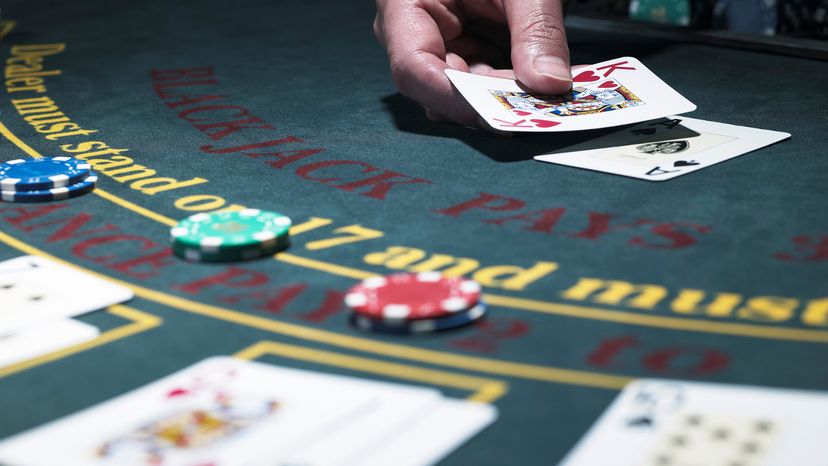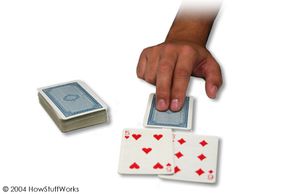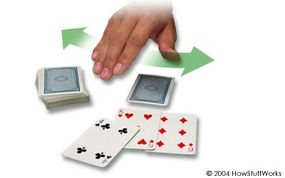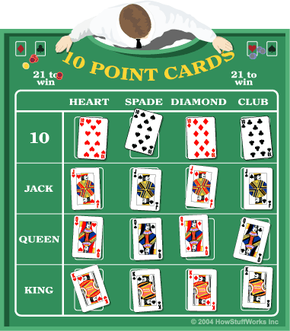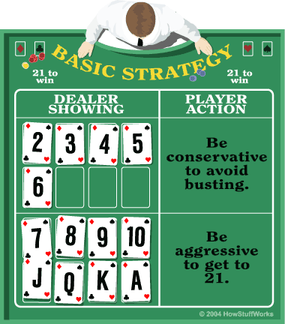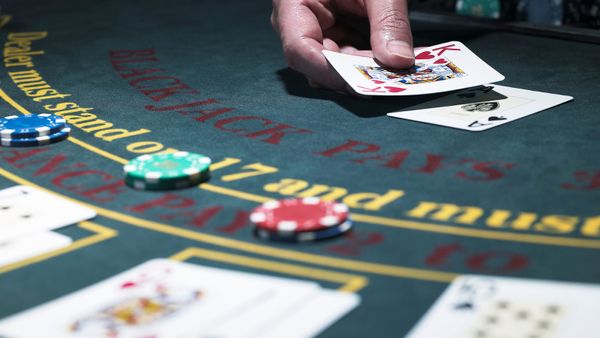Casinos have taken a number of steps to negate the advantage gained by counting cards since the first counting systems were introduced in the early 1960s. In many ways, these "countermeasures" have worked, and the card counter of today doesn't have as much of an advantage.
The first attempt to stop counters was a clumsy move in which casinos sharply limited the players' ability to double and split. The result was a drastic decline in players at the blackjack tables, so the rule change was revoked. The casinos' next attempt was the real counter-killer.
Until card counters arrived, blackjack was played at casinos in much the same way you might play it at home -- with a single deck of cards. To make it harder to keep track of the cards in the deck, casinos soon switched to a multideck game, with two decks shuffled together. Today, most casinos use six, eight, or even more decks shuffled together. This is why few dealers deal by hand. It's too hard to handle that huge stack of cards. Instead, they use a plastic box called a shoe.
With so many cards in the deck, each card represents a smaller percentage of the deck, so counting provides a smaller advantage. Methods have been devised to account for multideck play (see sidebar), but the fact remains that it makes things a lot harder for card counters.
The casinos didn't stop there. They also burn (discard) more than one card, or burn cards after every play. Usually, the burn cards go into the discard tray, and the player never sees them. This is obviously a major hindrance for the card counter.
Blackjack dealers also tend to shuffle the deck more often. This resets the count and prevents the counters from getting a favorable deck with a high count. If a player suddenly makes a large bet after betting the minimum for many hands, the dealer may suspect a counter and shuffle immediately.
If someone continues to win at the blackjack table despite all these obstacles, the casino will simply apply "heat." The pit boss or several security guards may arrive at the table and take a sudden interest in the winning player, watching him carefully and closely. As a last resort, they may simply escort the counter out of the casino and ask him not to return. Well-known counters will have their picture posted, so casino security will know them by sight. As Michael Benson put it in his blackjack strategy book, "You can tell that you are getting to be a good blackjack player not just when you go home with more money than you started with, but when casinos begin to keep an eye on you."
The system players aren't left defenseless, however. While casino pit bosses are able to easily spot individual counters by their sometimes slow play and obvious betting patterns, blackjack teams have walked away from the casinos with millions of dollars before the casinos caught on. One legendary team from the Massachusetts Institute of Technology practiced in mock casinos and refined its techniques over the years, winning big before they were discovered. (You can read about the strategy in Bringing Down the House: The Inside Story of Six M.I.T. Who Took Vegas For Millions, by Ben Mezrich.) Here is an example of a typical blackjack team making a run at a casino:
One player, the spotter, sits at the table playing the table minimum. His bet never varies. At the same time, he's counting cards carefully, but not obviously. Because his bet never changes, the pit bosses never suspect him of counting. If the casino is very busy, a back-spotter might be used. Typically, this is a female team member, made to look like a player's girlfriend, standing behind him and rubbing his shoulders as he plays. The whole time, she's keeping up the true count.
Meanwhile, another team member is hanging around nearby, but he's not playing blackjack. Taking advantage of common stereotypes that pit bosses encounter, this player might be a young man who looks like he could be the son of a rich, foreign businessman -- a big spender (known among casino owners as a "whale"). When the true count shows an advantageous deck, the spotter gives a subtle signal to the big spender. A hand in a pocket or arms folded across the spotter's chest are enough to bring the big spender over to the blackjack table. Acting like a drunk, reckless rich kid, the big spender lays down a huge bet as soon as he reaches the table and keeps betting big until the spotter signals that either the count is getting low or the pit boss is getting suspicious. Then the big spender stumbles away with his winnings, and no one on the team ever changed their betting pattern or did anything else the casinos usually look for in catching counters.
Now, counting is hard, but cheating at blackjack is even harder. In fact, it's usually the players getting cheated, not the casinos.
